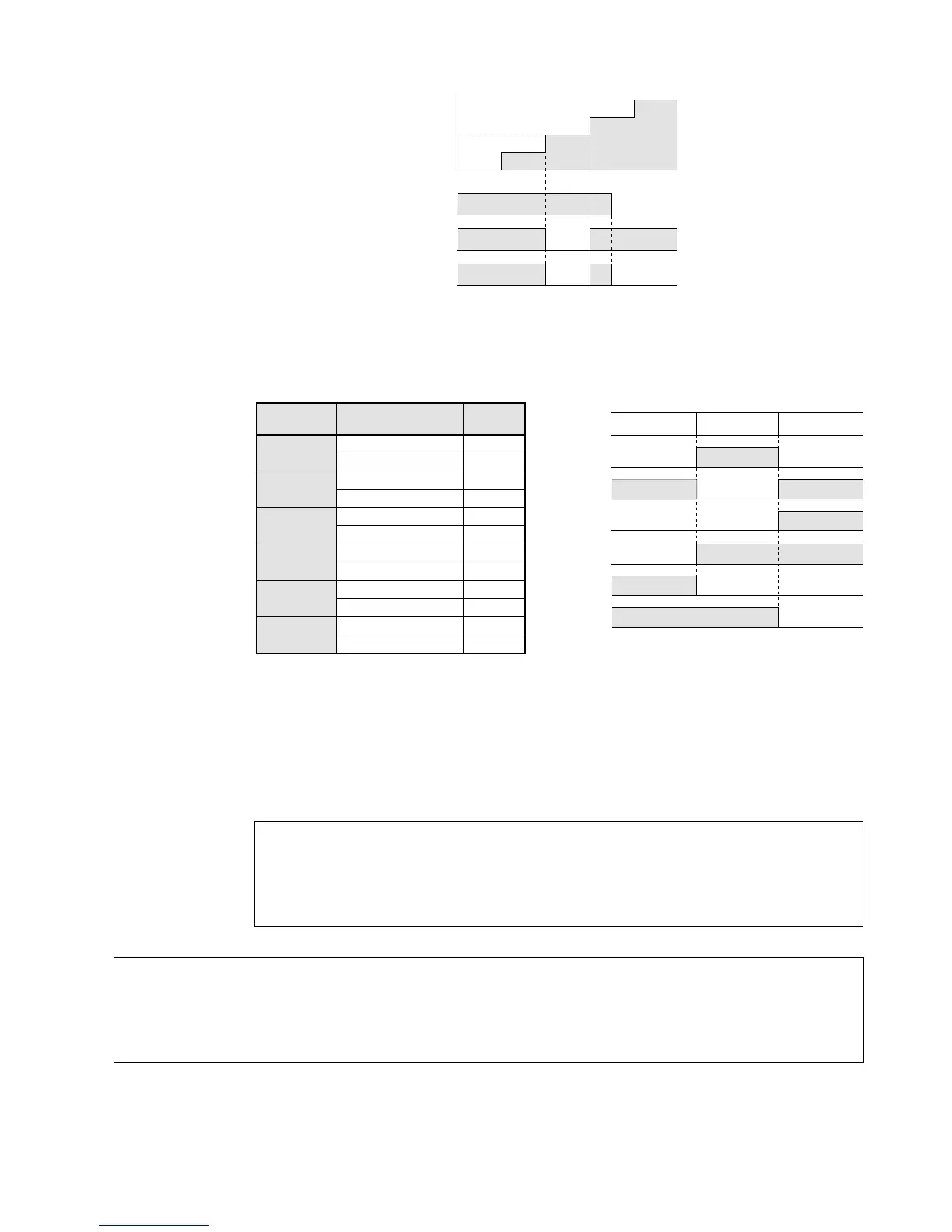Description
• Compares the double word data specified by S1 and S1+1, with the double word data specified
by S2 and S2+1, according to the comparative conditions. The contact goes ON/OFF depending
on the result of the comparison. The contacts are connected serially.
• The result of the comparison operation is as follows:
■ Flag condition
• Error flag (R9007): Turns ON and keeps the ON state when the area specified using the
index modifier exceeds the limit. The error address is transferred to
DT9017 and held. (See notes below.)
• Error flag (R9008): Turns ON for an instant when the area specified using the index
modifier exceeds the limit. The error address is transferred to DT9018.
(See notes below.)
Notes:
Notes:
• Multiple AND comparison instructions AND =, AND <>, AND >, AND >=, AND <, and AND <= can
be used consecutively.
• This instruction can be input only with FP Programmer ΙΙ or NPST-GR version 3.1 or later.
• When processing 32-bit data, the higher 16-bit areas (S1+1, S2+1) are automatically decided if the lower
16-bit areas (S1, S2) are specified.
• Special data registers DT9017 and DT9018 are available only for FP1s with CPU
version 2.7 or later. (All FP1s with a suffix “B” on the part number have this function.)
• When using special internal relay R9008 as the flag for this instruction, be sure to
program the flag at the address immediately after the instruction.
• Refer to page 223, “8-3. Table of Special Internal Relays”, for details about error flags.
